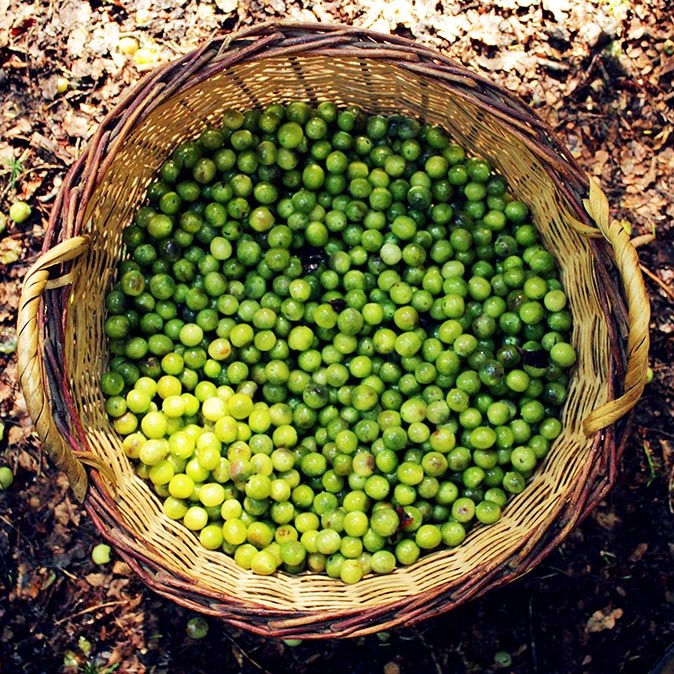Tag
You Can Eat Your Cake and Have It Too: A Special Cake Recipe from the Nicobar Islands, India

by Rakhi Kumari Food—its cultivation, cooking, and consumption—is an important ingredient for studying a society. Whether looking at food through the lens of anthropology, history, or linguistics, we cannot skip this strand of the cultural tapestry of a society if we wish to understand it clearly. What we eat, and how we eat, isn’t just
Ita: A Special Food for a Special Time in an Indonesian Community

by Lina A. Karolin I carefully cut the rice stalks in front of me. “Make sure you do not leave any stalk behind,” said Grandma Kader, my great-grandmother. “If you leave a sprig, the rice will cry and won’t come back again, which is why the next harvest will not be good,” she said with
Del Monte a la Cocina: Gathering Inspiration in Southern Chile

by Antonia Barreau, Sonia Aliante Raiguanque, Jesús Sánchez, Rosario Valdivieso, and Susannah R. McCandless What could be more local than wild, foraged foods, especially in a country where biogeographic isolation has generated high degrees of endemism? Wild foods contribute to Chile’s distinct cultural cuisine. In the south, they form an essential part of the traditional
Circles of Kinship: Faces of Turtle Island’s Seed Guardians

Text and photos by Mateo Hinojosa “What is a seed?” Farmers, activists, academics, artists, and people of all walks of life take a moment to think of the seeds in their lives—as they digest the grains they ate that morning, finger their necklaces crafted of kernels, send a prayer to their crops in their fields
The Lure of a “Modern Lifestyle”: Bridging the Food Generation Gap in South Africa

by Felix Kwabena Donkor and Kevin Mearns . Good nutrition, health, and well-being are core narratives in the United Nations’ Sustainable Development Goals (SDGs). Wholesome food is a common denominator in achieving these ideals. In many places around the world, however, food is more than what meets the eye or is served on the plate.
Pinto Beans and Ham Hocks

A reflection by Carrie Ann Barton Science tells us that the sense of smell most strongly sparks our memories and emotions I smell stories I smell reunions I smell tradition I smell anticipation I smell family I smell Love . . Back to Vol. 7, Issue 2 | Read the Table of Contents | Like Our Stories? Please Donate!
Making Haku Chhoyala: Food Brings a Nepalese Indigenous Community Together

by Sheetal Vaidya, Manju Maharjan, and Prakash Khadgi . Evolutionary studies of the human brain conclude that intelligence is directly linked to meat consumption — not because of its nutritional qualities but because of the cognitive abilities that are needed for the strategic sharing of meat within groups. The intellectual capacity needed for such sharing
Grandmother Oak and Her Acorn Teachings

by Sara Moncada and Maya Harjo We come here to listen. Under the beautiful Grandmother Oak grove that sits here along the tributaries of the Ignacio Creek watershed, we have come to listen to stories, to gather as community, to learn from one another and share good food. She is massive and very old, our
Cultivating Respect: Reviving Forgotten Plant Knowledge in Costa Rica

by Felipe Montoya-Greenheck Puriscal is a rural canton in the Province of San José, Costa Rica. It is located in the northern foothills of the Talamanca Mountain Range that divides the plains of the western Central Valley. Its capital, Santiago, was established in 1868. Before the colony, Puriscal and its surroundings were the territory of
Podcasting from the Native Seed Pod: Food Sovereignty Stories Nourish the Future

by Melissa K. Nelson “We’re being guided by forces seen and unseen that are telling us it’s time to pick up the seeds again. It’s time to learn how to grow these foods again.” —Rowen White, Episode One, “Native Seed Revolution” Seeds and Stories. Seed stories and stories as seeds. How and why are they

